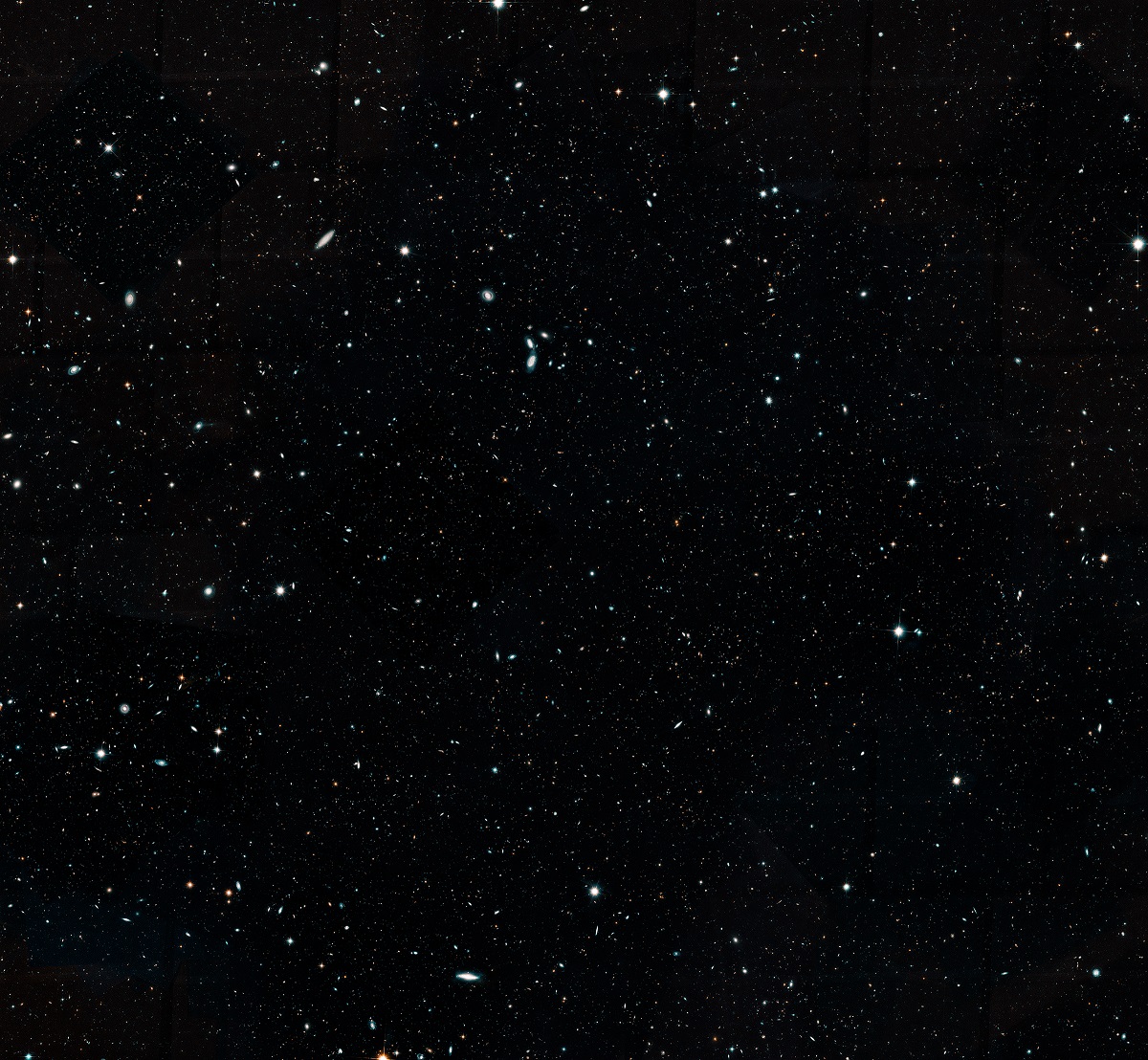mollwollfumble said:
Witty Rejoinder said:
ChrispenEvan said:
size of the full moon as seen from Earth.
What is the point of this new mosaic? Is it the opposite of the deep field in that it is a very crowded piece of space and therefore shows the greatest density of galaxies?
I was initially wondering about the point, too. There are at least three good reasons.
- A relatively complute picture of galaxy evolution. Previous studies had many fewer galaxies.
- A more complete picture of galaxy collisions. This should tell us a lot about galaxy mass distributions and movement.
- A visible light reference for upcoming wide field views in infrafred, particularly WFIRST.
A fourth reason is a heirarchy of image depth. This image contains the Galactic Origins O Deep Sky Survey GOODS which is a multi-wave!ength survey of a big patch of sky. Which contains the Hubble Ultra Deep Field. Which in turn contains the Hubble Extreme Deep Field.

Size of full version 25500 * 25500 pixels.
Web link says they’re already working on a second slightly smaller image from another patch of sky, the deep field location or the deep field south perhaps.
That’s 650 megapixels. Big.
But compare that with the camera on Pan-Starrs, 1400 megapixels for every image, with multiple images taken per night.
But Pan-Starrs isn’t deep. Hubble is.
I wonder if there are any Oort Cloud objects in the Hubble Legacy image? You never know, there may be a new planet there.


